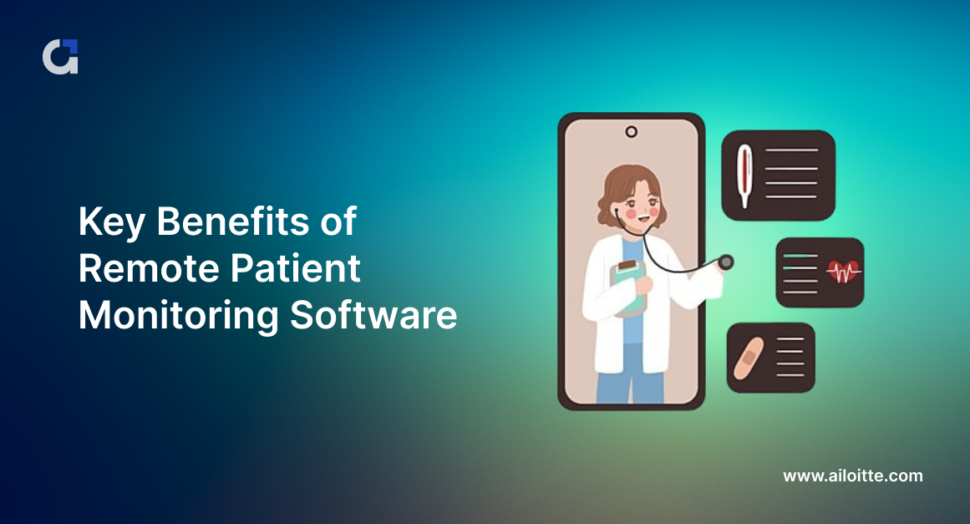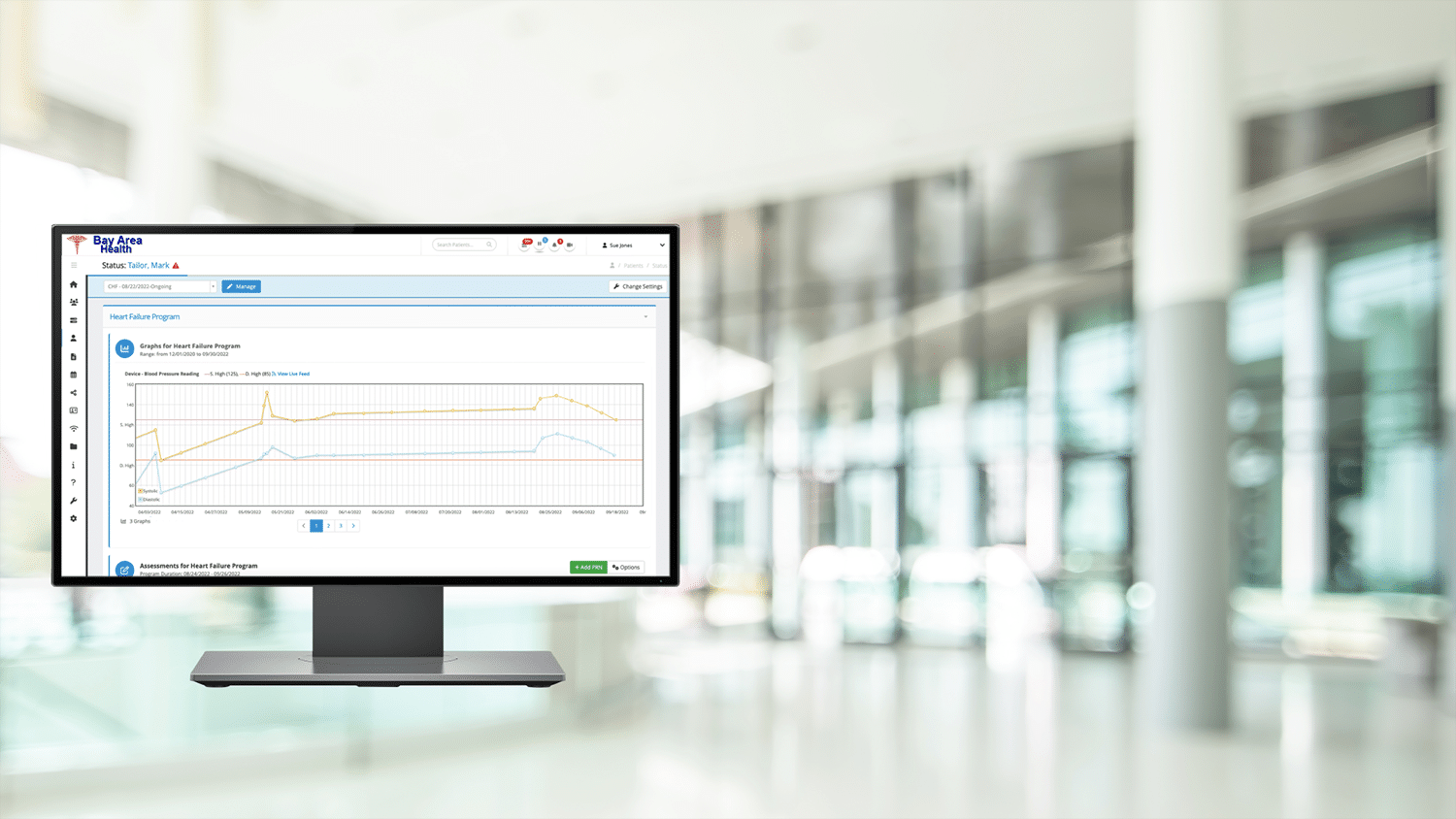Choosing the Best Remote Patient Monitoring Software: Key Considerations
Choosing the Best Remote Patient Monitoring Software: Key Considerations
Blog Article
The Future of Healthcare: Remote Patient Keeping An Eye On Simplified
As healthcare remains to evolve, one location that holds enormous assurance is remote client monitoring. The principle of simplifying this procedure through technological advancements is reshaping the method treatment is delivered and obtained. With a concentrate on boosting patient end results and improving healthcare distribution, remote tracking is positioned to revolutionize the sector. By discovering the advantages, technological advancements, and future trends in this field, we can acquire useful understandings into the transformative potential of remote individual surveillance.
Advantages of Remote Patient Monitoring
Remote person monitoring provides a plethora of advantages for both medical care service providers and clients alike. One significant advantage is the capacity to constantly keep track of clients' vital indicators and health and wellness data from another location. This real-time tracking enables medical care carriers to find any type of concerning fads or adjustments quickly, leading to very early treatments and potentially preventing clinical emergency situations. In addition, remote person surveillance improves the total high quality of treatment by supplying a more all natural and detailed view of individuals' health standing beyond typical in-person sees.
Additionally, remote person tracking can lead to better person outcomes and complete satisfaction. Remote surveillance can reduce the need for frequent medical facility sees, lowering healthcare prices for both people and providers.
Modern Technology Driving Remote Tracking
In the world of modern-day health care, technical innovations play an essential role in driving the development and efficiency of remote individual monitoring. The integration of ingenious technologies such as wearable devices, mobile applications, and cloud-based systems has changed the means doctor remotely monitor and take care of client wellness - remote patient monitoring platform. These modern technologies make it possible for constant real-time surveillance of crucial indicators, medicine adherence, and various other important health data, enabling timely interventions and personalized care strategies
One secret technology driving remote monitoring is the Web of Points (IoT), which enables smooth connection between medical tools and health care systems. IoT tools such as smartwatches and wireless sensing units collect and transmit patient information to centralized systems, helping with remote surveillance from anywhere in the world. Artificial intelligence (AI) and device discovering formulas even more boost remote monitoring by assessing huge amounts of individual data to spot patterns, predict wellness trends, and sharp doctor to potential issues.
Influence On Medical Care Shipment
With the combination of innovative technologies driving remote person surveillance, the effect on healthcare distribution is becoming transformative and increasingly profound. Remote client monitoring permits medical care suppliers to supply more aggressive and tailored like people, leading to boosted health outcomes and lowered health center admissions. By remotely tracking vital indications, symptoms, and medication adherence, medical care specialists can step in early, preventing difficulties and enhancing the total top quality of care.
In addition, remote surveillance improves accessibility to health care solutions, especially for individuals in underserved or country locations. Patients can receive continual surveillance and support from their homes, getting rid of the demand for regular in-person brows through. This not just saves time and lowers prices for here both people and medical care facilities yet additionally lessens the threat of exposure to transmittable conditions, a critical consideration in the current medical care landscape.
In addition, remote patient surveillance makes it possible for doctor to much better assign resources and prioritize treatment based upon real-time information. By identifying high-risk clients and stepping in without delay, medical care shipment ends up being much more reliable and effective, inevitably resulting in a more lasting and patient-centered healthcare system.
Improving Patient Outcomes

Moreover, RPM permits positive monitoring of persistent conditions, minimizing the chance of acute exacerbations and health center readmissions. Patients take advantage of enhanced convenience and convenience, as they can get care in their very own homes while staying linked to their healthcare companies. This continuous tracking not just enhances client complete satisfaction but additionally promotes a sense of empowerment and engagement in their very own health and wellness management.
Future Trends in Remote Surveillance
Accepting sophisticated innovations in remote person tracking is forming the future landscape of healthcare shipment. One substantial trend is the raised use of from this source wearable tools and sensors to accumulate real-time data, allowing medical care service providers to keep an eye on people continuously without the requirement for regular Learn More Here in-person brows through.

Moreover, telehealth platforms are becoming much more sophisticated, permitting digital appointments, remote medical diagnosis, and remote client monitoring done in one integrated system (best remote patient monitoring software). This holistic approach to remote tracking is enhancing health care distribution, enhancing client fulfillment, and inevitably, boosting overall quality of care
Conclusion
In conclusion, remote client tracking uses countless benefits in healthcare delivery, driven by advancements in technology. It has the potential to improve patient outcomes and revolutionize the way healthcare is delivered. Future trends in remote monitoring will remain to form the landscape of medical care, giving possibilities for even more personalized and effective person treatment.
Remote patient monitoring provides a wide variety of advantages for both health care suppliers and patients alike. In addition, remote individual tracking boosts the total quality of treatment by giving an extra alternative and detailed sight of individuals' health status past conventional in-person gos to.
Furthermore, remote client tracking can lead to enhanced person end results and satisfaction. Remote patient monitoring enables health care providers to offer even more positive and individualized care to clients, leading to improved wellness end results and lowered healthcare facility admissions. Remote individual monitoring (RPM) plays a substantial role in enhancing person results by giving continuous, real-time information that makes it possible for healthcare carriers to intervene immediately and readjust treatment plans as needed.
Report this page